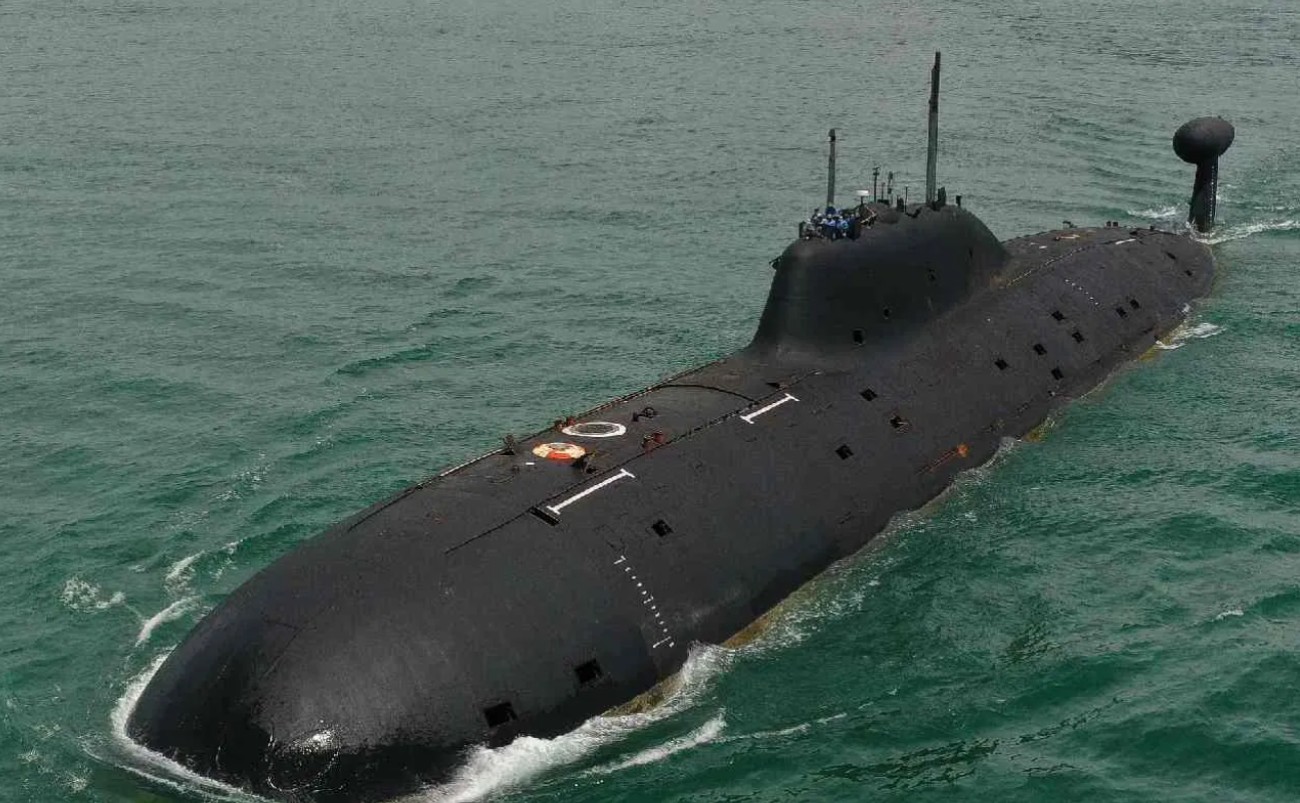Russia’s Rubin Central Design Bureau will present the Amur-950 submarine fitted with vertical launch missile tubes capable of launching Brahmos missiles at the Army-2024 exhibition for the first time; the company told RIA Novosti.
The Rubin Central Design Bureau said in a statement, “At the Army-2024 exhibition, the design bureau will present the Amur 950 non-nuclear submarine of the sea zone with vertical launchers.”
The submarine’s Brahmos vertical launch capability is clearly pitched at the Indian Navy. It may be recalled that Russia’s UAC had earlier pitched the AMUR 1650 for the Indian Navy’s Project 75I submarine procurement project.
Amur-950 Submarine
The Amur-class submarine is a modernized version of the Kilo-class submarine with improved acoustic stealth, new combat systems, and an option for air-independent propulsion.
The Indian Navy currently operates 7 Kilo-class submarines, locally referred to as the Sindhughosh-class. The boats were acquired from Russia starting in the late 1980s and have undertones several life extension and capability upgrades.
Kilo-class submarines are known for their low acoustic signature. They have a double hull design: the inner pressure hull is designed to withstand underwater pressure, and an outer light hull provides additional buoyancy and protection.
The space between the two hulls is often used for ballast tanks and other systems. This design enhances the submarine’s survivability and operational capabilities.
In contrast, Amur-class boats are single-hulled, reducing displacement and acoustic signature. They are powered by a totally new main electric engine using permanent magnets, which features high energy conversion efficiency even at low cruise speeds.
As a result, the Amur-650 submarine’s acoustic signature is several times lower than the older Kilo-class submarines! Amur submarines can be outfitted with a hull extension plug with AIP (Air Independent Propulsion) fuel cells, considerably improving submerged endurance and range.
Specifications
As its name suggests, the Amur-950 displaces 950 tons when surfaced and 1,300 tons when submerged.
The boat is 56.8 m long and has a 7.2m beam. It can do 20 knots when submerged and has a range of 350 nm on AIP and 4,000 nm at snorkel depth.
Weapons Fit
Despite its small size, the Amur-950 packs a formidable punch.
The submarine will feature 10 vertical silos for BrahMos missiles, 4 533 mm tubes with 16 torpedoes, missiles, and mines.
It’s capable of salvo-fire at multiple pre-designated targets.
The Rubin statement refers to the submarines as “a naval floating battery capable of delivering a powerful salvo preemptive strike against enemy ships and coastal infrastructure.”

Local Manufacture
While offering the Amur-1650 submarine against India’s Project 75I requirement, Russia proposed jointly designing and building the lead vessel of the design with India.
On July 9, 2019, Deputy Director of the Federal Service for Military-Technical Cooperation (FSMTC) Vladimir Drozhzhov told reporters that the ToT during project implementation would be total, allowing India to build a follow-up series on its own.
Russia also proposed that the Project 75I submarine be fitted with either the DRDO-developed AIP or a Rubin-developed AIP.
It’s interesting to note that when Project 75I procurement was first initiated, the QRs (Qualitative requirements) included AIP and Land-attack capability. (At least 12 LACMs with 500-km range).
It was reported that the IN (Indian Navy) wants the Land-attack capability to be based upon a submarine segment fitted with vertically launched Brahmos missiles to increase the boat’s overall firepower.
Later, the Indian Navy dropped the Brahmos missile land attack capability, likely because no Western OEM could meet the QR. Subsequently, Indian media coverage started to stress exclusively on the AIP capability of Project 75I submarines.
India has already developed a submarine-launched variant of the Brahmos missile. The first test of the submarine variant of the missile was conducted on March 20, 2013, from a submerged platform in the Bay of Bengal, off the coast of Visakhapatnam.
Subsequently, a pontoon, used earlier to test the K-15 Shaurya missile, was modified to test the Brahmos submarine variant. A ring was to be fitted in it to snugly fit the smaller diameter Brahmos.
In 2015, the submarine variant reportedly underwent a successful trial from a submerged pontoon. It remains to be seen if the IN will be tempted by the Russian proposal implicit in the display of a Brahmos-armed Amur-950 submarine model at Army-2024!
- Vijainder K Thakur is a retired IAF Jaguar pilot, author, software architect, entrepreneur, and military analyst.
- VIEWS PERSONAL OF THE AUTHOR
- Follow the author @vkthakur




